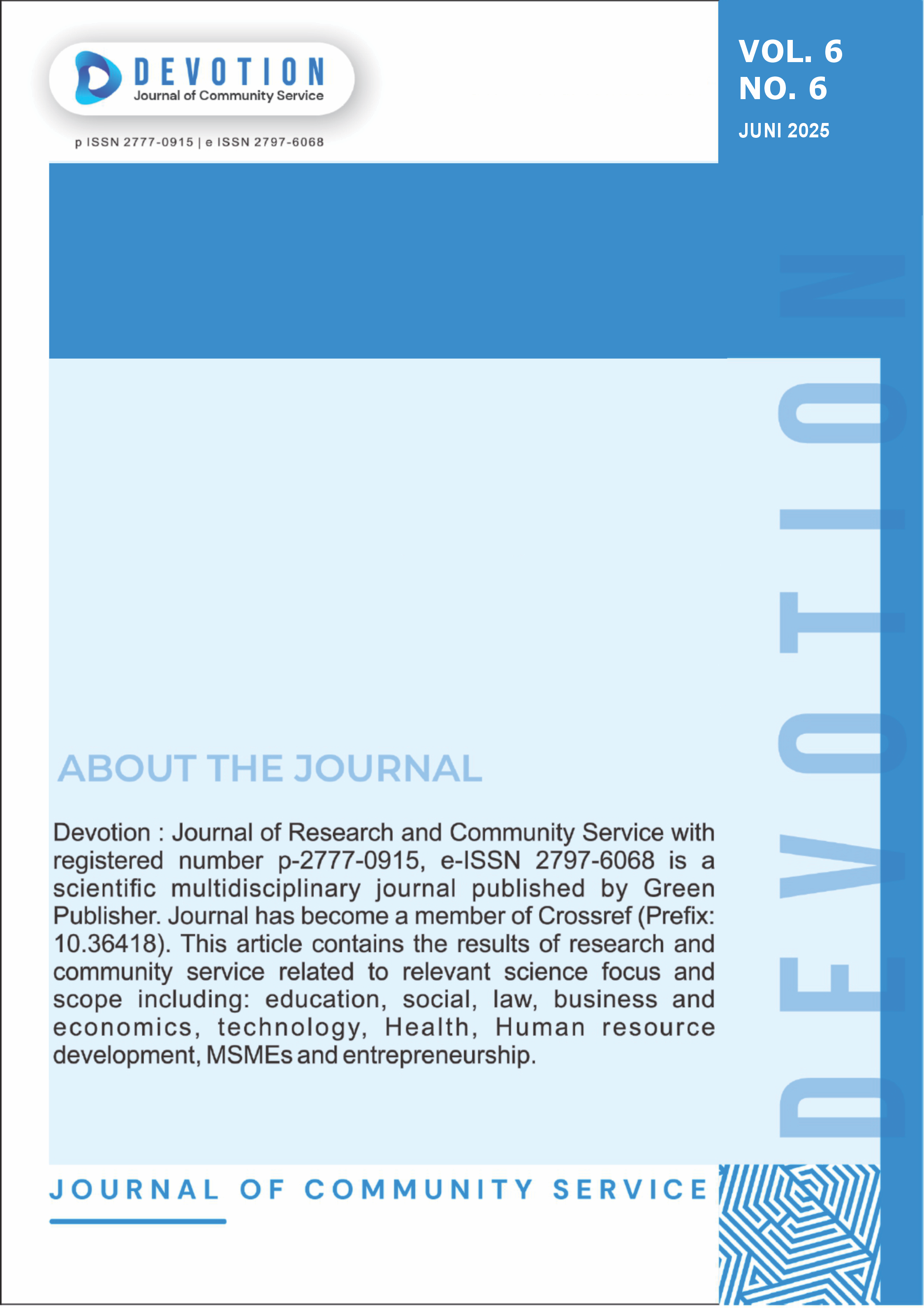Marketing Communication Strategy to Increase Tourist Visits to Tumpak Sewu Waterfall In Lumajang
DOI:
https://doi.org/10.59188/devotion.v6i6.25491Abstract
The purpose of this research is to examine the Integrated Marketing Communication (IMC) strategy in increasing tourist visits to Tumpak Sewu Waterfall, Lumajang. Utilizing a descriptive qualitative model, data was gathered through in-depth interviews with local stakeholders, including the Tourism Agency, tour managers, and tourists. The results of the study show that all the main elements of IMC have been implemented, including advertising, personal selling, sales promotion, public relations, direct marketing, interactive marketing, and word of mouth. This strategy has proven effective in increasing the visibility and interest of both domestic and international tourists. Furthermore, the active participation of local communities, such as Pokdarwis and tour guides, also contributes to strengthening the tourist experience and enhancing the overall destination appeal. However, the research also identified several problems in the actualization of the IMC strategy, such as illegal collection practices, weak coordination in the management of Grojogan Sewu as a new destination, and the suboptimal utilization of the digital application "Lumajang Tourism." In addition, the lack of periodic evaluation and consistency in promotional messaging also presents obstacles. As a solution, the researcher recommends strengthening the Community-Based Tourism (CBT) approach so that local communities are not only implementers, but also the main drivers in tourism promotion. By integrating the principles of IMC and CBT, tourism development can proceed in an inclusive and sustainable manner, with significant implications for enhancing the welfare of local communities.Downloads
Published
2025-06-26
Issue
Section
Articles
License
Copyright (c) 2025 Sherina Syarofa, Teguh Priyo Sadono, Bambang Sigit Pramono

This work is licensed under a Creative Commons Attribution-ShareAlike 4.0 International License.
Authors who publish with this journal agree to the following terms:
- Authors retain copyright and grant the journal right of first publication with the work simultaneously licensed under a Creative Commons Attribution-ShareAlike 4.0 International. that allows others to share the work with an acknowledgement of the work's authorship and initial publication in this journal.
- Authors are able to enter into separate, additional contractual arrangements for the non-exclusive distribution of the journal's published version of the work (e.g., post it to an institutional repository or publish it in a book), with an acknowledgement of its initial publication in this journal.
- Authors are permitted and encouraged to post their work online (e.g., in institutional repositories or on their website) prior to and during the submission process, as it can lead to productive exchanges, as well as earlier and greater citation of published work.













